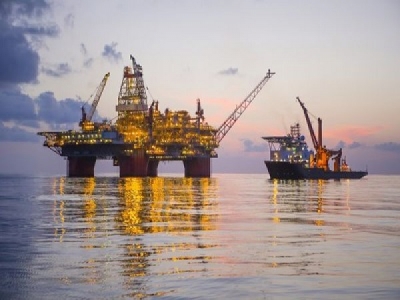
Posted on November 20, 2018
Oil and gas produced from federal waters in the Gulf of Mexico and on federal land in Louisiana in fiscal year 2018 will add $91 million to the budgets of the state and coastal parishes, the Interior Department announced recently, with much of the money dedicated to state coastal protection and restoration.
The biggest chunk, $82.8 million, will be split between the state and 20 coastal parishes under the terms of the federal Gulf of Mexico Energy Security Act (GOMESA), which regulates how royalties and fees paid by companies operating in the deepwater Gulf are split between the federal government and Gulf Coast states.
Gulf states would get a bigger share of offshore revenue, under bill that advanced in House
GOMESA was only directing $1 million or $2 million a year to the state and parishes until the law’s second phase kicked in this year, which requires turning over 37.5 percent of offshore revenue from newly developed oil and gas wells to states, with some limitations.
GOMESA caps the total payment to all states at no more than $500 million a year until 2055, split among the states based on the location of the oil- and gas-producing wells. Louisiana had hoped that would have resulted in as much as $140 million a year going to the state and another $35 million split between the state’s 20 coastal parishes.
But both lower oil and gas prices and the six-month federally enforced moratorium on drilling in the Gulf after the April 2010 Deepwater Horizon had limited development of oil and gas wells in the Gulf and cut this first year’s payment to the state by more than half.
The state will receive $66.3 million from GOMESA, with the money going to the Coastal Protection and Restoration Authority, and expects to get a similar amount next year.
In its fiscal year 2019 annual plan for coastal restoration and hurricane protection, the CPRA anticipated that it would use the GOMESA money from fiscal years 2018 and 2019 mostly to help pay for existing or planned hurricane levees in Jefferson, Lafourche, St. Charles, St. James, St. Tammany and Vermilion parishes. Some of the money also will be used for a variety of ongoing monitoring and adaptation programs aimed at keeping track of and reshaping coastal restoration projects that have already been built.
$566M recommended for coastal restoration, hurricane protection in fiscal year 2019
As the revenue from GOMESA grows, however, the state may be forced to use it to repay the federal government for Louisiana’s $3 billion share of the $14.6 billion cost of rebuilding the New Orleans-area levee system after Hurricane Katrina. Beginning in 2020, when those levees are formally transferred to the state by the Army Corps of Engineers, the state must begin repaying $100 million a year for 30 years.
State officials have not given up on efforts to convince Congress to forgive that debt, but there’s not yet been an indication that Congress will agree.
State officials have seemed to make more headway in convincing Congress to increase Louisiana’s share of Gulf offshore oil money in future years to 50 percent, and to increase or eliminate the $500 million per year cap that now exists on the total amount of money shared among Gulf Coast states before its present 2055 expiration.
However, it remains unclear whether that legislation will be approved by what is now a lame-duck Congress before Democrats regain control of the House of Representatives in January. Indeed, state officials remain worried that Congress will be convinced to require the Gulf money be shared with other states.
Thanks to an amendment to the state Constitution approved in 2006, Louisiana must use its GOMESA money on uses allowed by the terms of the Coastal Protection and Restoration Trust Fund, generally for coastal restoration and hurricane levee projects
CPRA also has been urging local parishes to use their share of GOMESA to help pay for coastal master plan levee and restoration projects within their borders.
Each of the 20 coastal parishes will receive between $550,000 and $1.6 million for fiscal year 2018, with the amount each parish receives based on how close the parish is to Gulf drilling.
The parishes are restricted on how to use the money by federal rules included in GOMESA, but not by the state’s trust fund rules. The federal rules allow the money to be used for coastal protection, defined as conservation, restoration or hurricane protection; mitigation of damage to wildlife or natural resources; implementation of a federally approved conservation management plan; and mitigation of the effects of outer continental shelf drilling activities through onshore infrastructure projects. That last category allows some of the money to be used for roads.
The state also will receive $2.2 million as its share of oil and gas revenue from federally owned onshore property in Louisiana, and about $6 million from oil and gas production in nearshore “8(g)” waters, a 3-mile stretch of the Gulf that extends south from the 3 miles of coastal water that the state owns.
The 8(g) money, named for a provision in the federal law governing nearshore oil revenues, are constitutionally dedicated to the Louisiana Board of Regents, Louisiana Board of Elementary and Secondary Education, and the CPRA.
Source: nola





